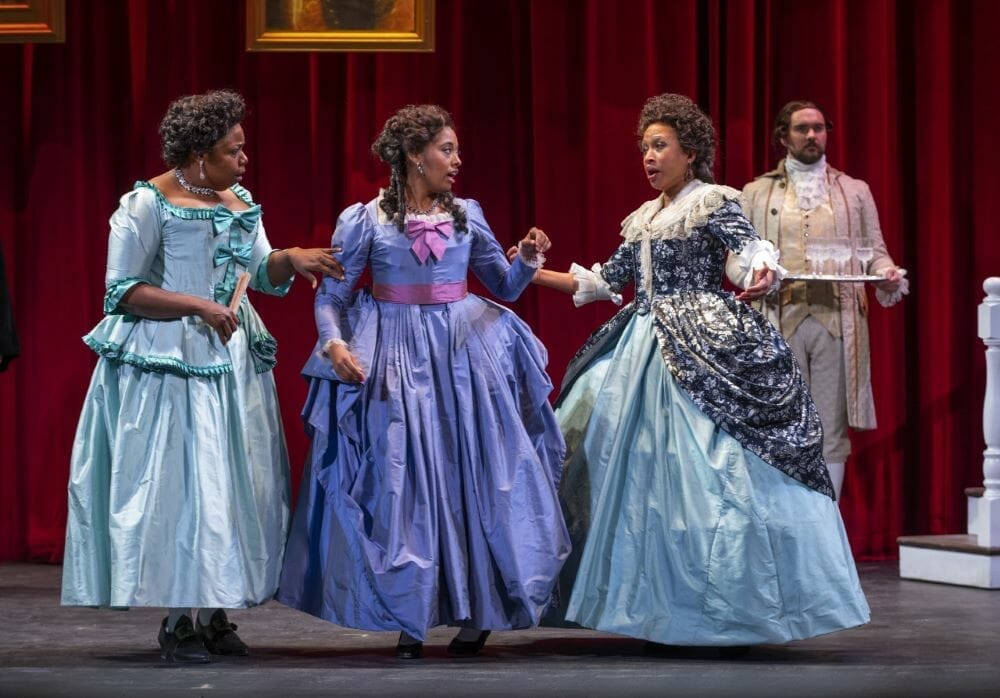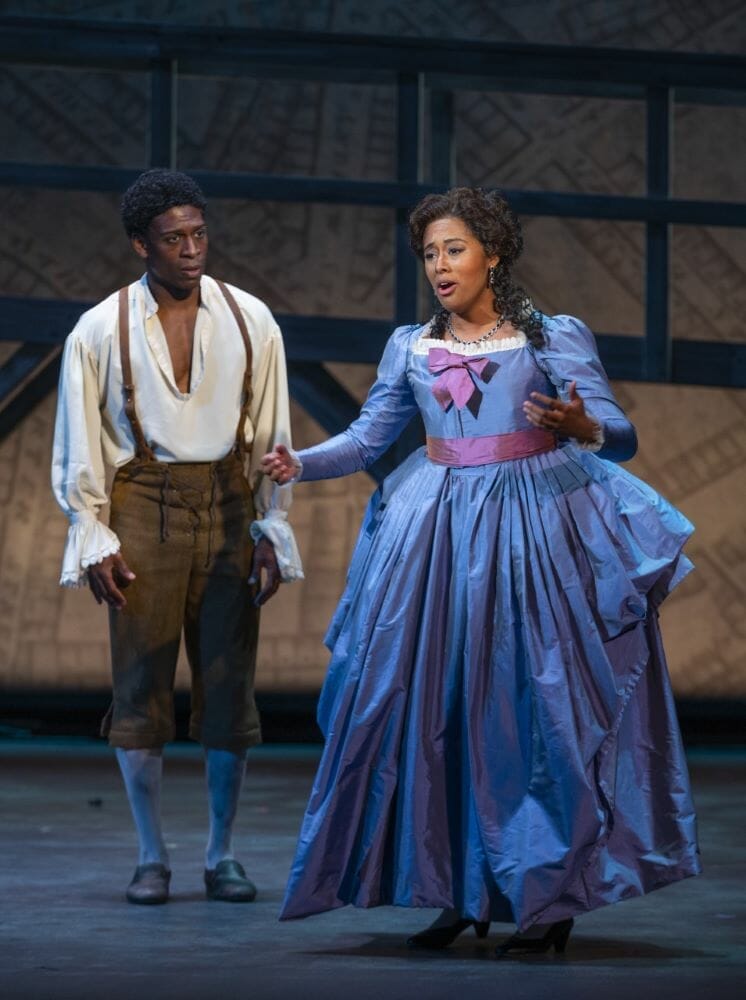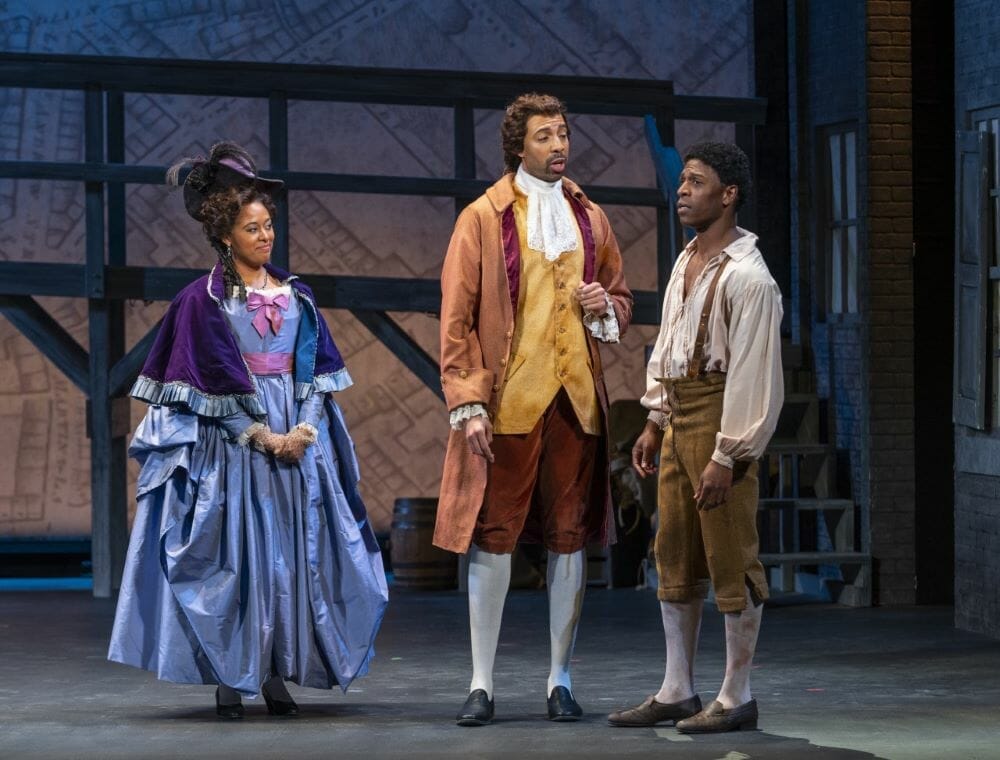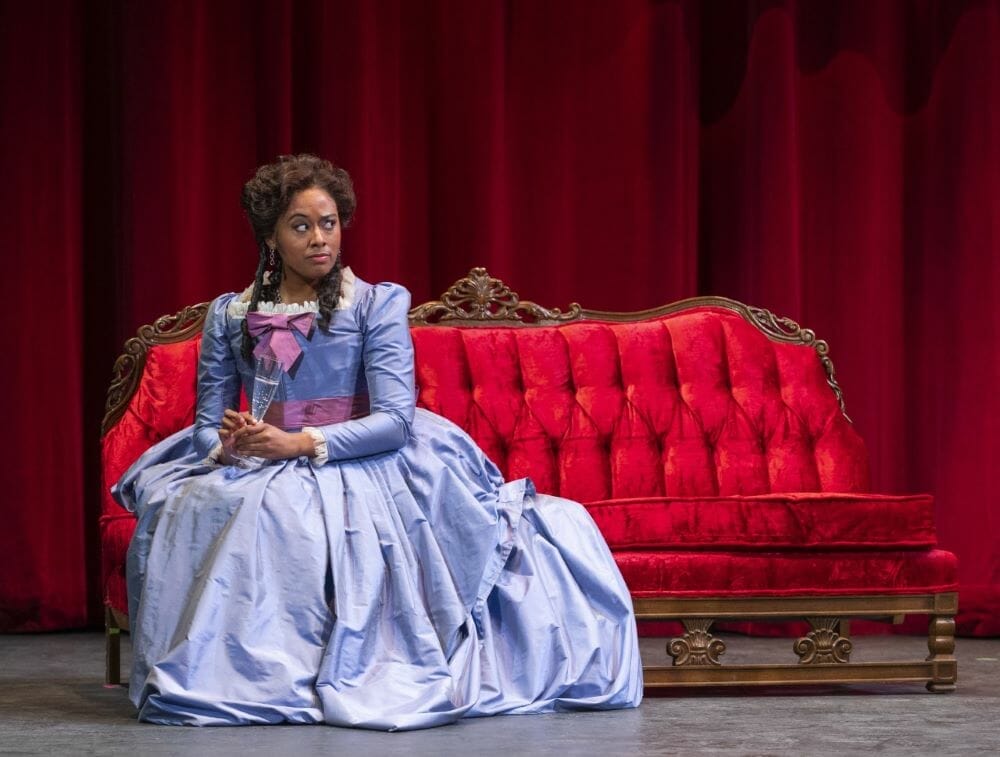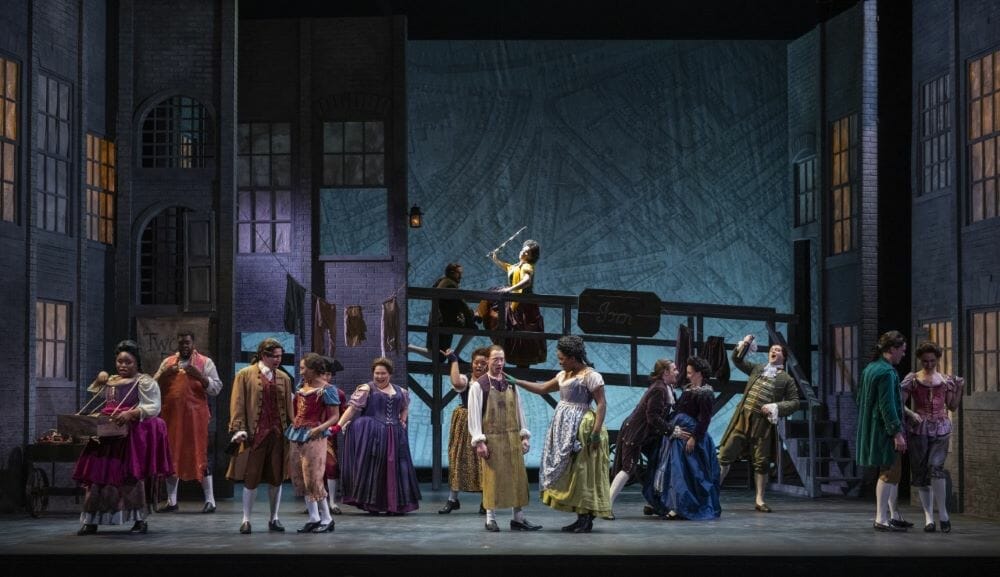Click here to read more Picture This Post Chicago Opera Theater stories.
A medley of London’s voices rises above even the tall ship pulling into dock. Although they’ve lost the war in America, it’s still a happy day for the waiting crowd, because freed slaves are arriving. Some of them had been long separated from friends and family who had gone ahead to Britain over the course of the war as a reward for their service or to frustrate their masters. For those who have nobody, there’s a committee, represented by the well-to-do Amelia (Flora Hawk), that will guide them to where they can get daily alms and…that’s pretty much all they get.
Quamino’s Map is a world-premiere opera at Chicago Opera Theater loosely adapted from the 90s historical fiction novel Incomparable World by S.I. Hinton. With a score by Errollyn Wallen and a libretto by Deborah Brevoort, it presents a new immigrant’s desperate first week as an impressionistic soundscape made up of London society from the worst slums to eighteenth-century Britain’s real but seldom-depicted upper middle class.
Finding a Place in the New Old World
Most people called him Black Billy, but the newest arrival’s friend, Quamino (Damien Geter) and Amelia tell him that won’t do. Able to get baptized as whatever he wants, he picks the name Juba Freeman (Curtis Bannister). Although he’s instantly smitten with Amelia, perhaps the first Black woman he has ever seen with the confidence and finery of an English lady, there are practical matters to attend to, such as the fact that his six pence in alms per day are only good for a biscuit. Having served as a saboteur and pillager for the British army, he was supposed to have received a secure position, but that turns out to be a total lie, and he is also informed that there are laws against hiring Black people. Dele Piebald (Tyrone Chambers II), is a beggar who is something of a local fixture, having gone mad from torture during his years as a slave, Quamino says, and is now tolerated mainly out of pity. Quamino himself has a position as a cartographer, a job that helps him achieve his joy in helping people get to where they need to go, but the price he’s paid for it is severe. Poor Juba is deeply disappointed and outraged, and he is also hungry and on the brink of despair that his journey into freedom may only end in madness.
Director Kimille Howard and conductor Jeri Lynne Johnson keep the show to a snappy ninety minutes, but in this reviewer’s experience, there is a strong sense of place in this little corner of the city. The music is modern, save for some humorous moments of baroque trilling with Amelia’s stuffy family. The ode to London’s grimiest neighborhood sounds like it could be inspired by The Threepenny Opera, while other portions of the show lean into melodrama. Damien Geter’s bass Quamino, especially, has an otherworldly air about him as he walks the streets surveying and occasionally supplying Juba with crucial nudges. Tenor Curtis Bannister’s Juba is so open he could be earnestness itself; his voice even sounds like the fiddle that was once Juba’s price and joy. As Amelia, soprano Flora Hawk plays a young woman who is a supporter of British assimilation by conviction and not just convenience. A combination of privileged naiveté and deep strength and conviction, Amelia is not just the symbol Juba makes her out to be, but it’s clear why he describes her as his angel.
Chicago Opera Theater Samples Impressions of Another World
Quamino’s Map is steeped in the tropes of historical fiction, and for fans of that genre, that will likely be a lot of the fun. Amelia’s obligation to maintain her family’s wealthy but extremely tenuous position, when confronted each day by how far they’ve been lucky to rise, adds a layer to the usual love-or-pragmatism heroine’s dilemma. And if it’s convenient that Juba somehow got the skills to play the fiddle masterfully, it’s not convenient that he doesn’t currently have one and would only gain a fingernail-grip on society if he did.
Quamino cautions that humans don’t really move through space the way a map represents it and that finding your path always involves a lot of personal interpretation and unknowns, although his phrasing of that is much more lyrical. The opera’s poetic lyricism is one of its main distinctions, in this writer’s opinion, and what makes it feel like briefly being transported to a different world.
Nominate this for The Picture This Post BEST OF 2022???
Click Readers' Choice!
WHEN:
Friday April 29th at 7:30pm and
Sunday May 1st at 3:00pm
WHERE:
Studebaker Theater at the Fine Arts Building
410 S. Michigan Avenue
Chicago
TICKETS:
$45+
For more information visit this Chicago Opera Theater Website.
Note: Picture This Post reviews are excerpted by Theatre in Chicago.
Photos by Michael Brosilow
This story has been added to the Picture This Post roundup article on OPERAS WE LOVE.
Watch this video preview here--

About the Author: Jacob Davis
Jacob Davis has lived in Chicago since 2014 when he started writing articles about theatre, opera, and dance for a number of review websites. He is a graduate of the University of Illinois at Urbana-Champaign’s Department of Theatre, where he specialized in the history of modernist dramatic literature and criticism. While there, he interned as a dramaturge for Dance Heginbotham developing concepts for new dance pieces. His professional work includes developing the original jazz performance piece The Blues Ain’t a Color with Denise LaGrassa, which played at Theater Wit. He has also written promotional materials for theatre companies including Silk Road Rising.
Click here to find more Picture This Post articles by Jacob Davis.

